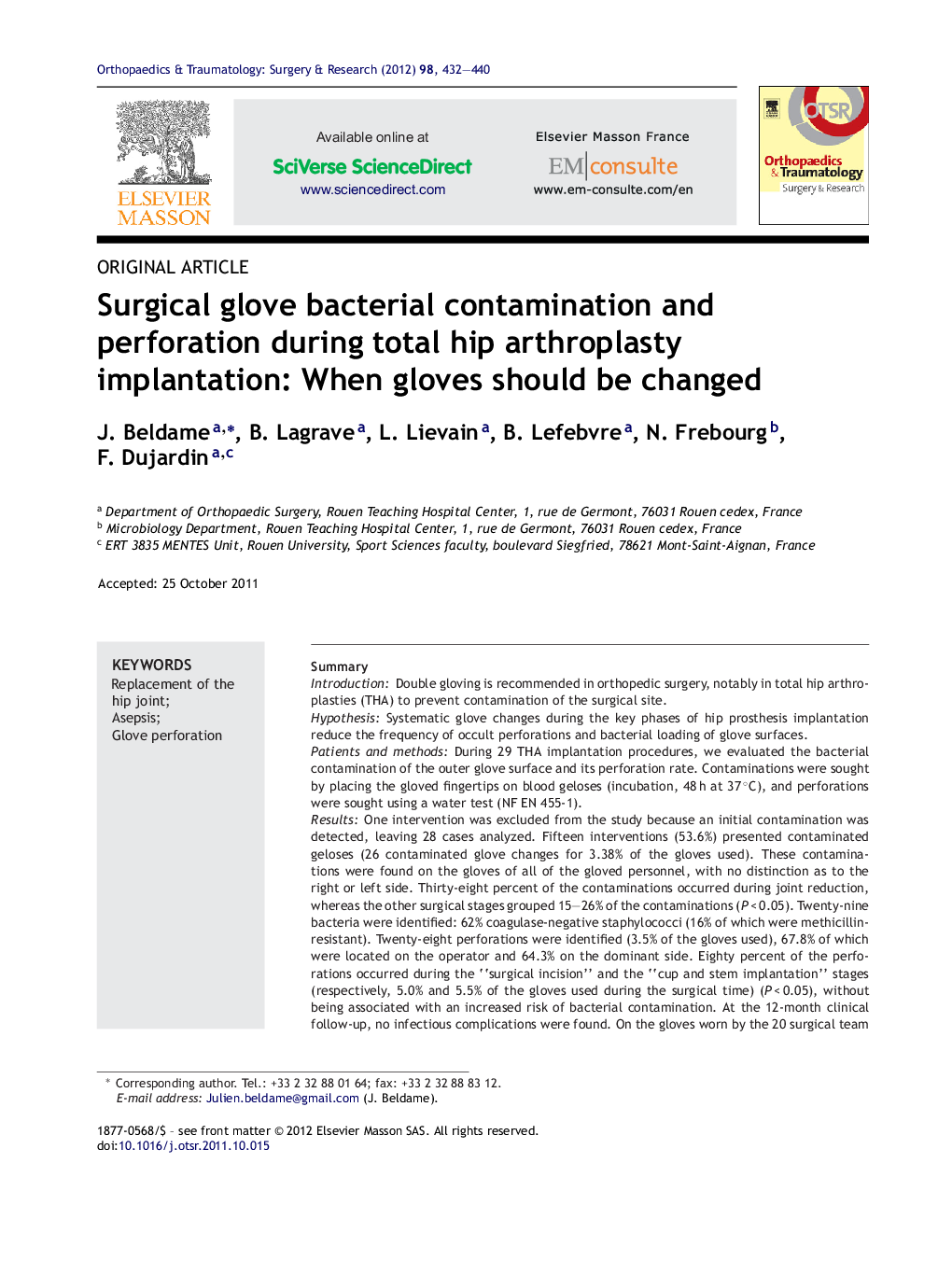| کد مقاله | کد نشریه | سال انتشار | مقاله انگلیسی | نسخه تمام متن |
|---|---|---|---|---|
| 4081828 | 1267610 | 2012 | 9 صفحه PDF | دانلود رایگان |

SummaryIntroductionDouble gloving is recommended in orthopedic surgery, notably in total hip arthroplasties (THA) to prevent contamination of the surgical site.HypothesisSystematic glove changes during the key phases of hip prosthesis implantation reduce the frequency of occult perforations and bacterial loading of glove surfaces.Patients and methodsDuring 29 THA implantation procedures, we evaluated the bacterial contamination of the outer glove surface and its perforation rate. Contaminations were sought by placing the gloved fingertips on blood geloses (incubation, 48 h at 37 °C), and perforations were sought using a water test (NF EN 455-1).ResultsOne intervention was excluded from the study because an initial contamination was detected, leaving 28 cases analyzed. Fifteen interventions (53.6%) presented contaminated geloses (26 contaminated glove changes for 3.38% of the gloves used). These contaminations were found on the gloves of all of the gloved personnel, with no distinction as to the right or left side. Thirty-eight percent of the contaminations occurred during joint reduction, whereas the other surgical stages grouped 15–26% of the contaminations (P < 0.05). Twenty-nine bacteria were identified: 62% coagulase-negative staphylococci (16% of which were methicillin-resistant). Twenty-eight perforations were identified (3.5% of the gloves used), 67.8% of which were located on the operator and 64.3% on the dominant side. Eighty percent of the perforations occurred during the “surgical incision” and the “cup and stem implantation” stages (respectively, 5.0% and 5.5% of the gloves used during the surgical time) (P < 0.05), without being associated with an increased risk of bacterial contamination. At the 12-month clinical follow-up, no infectious complications were found. On the gloves worn by the 20 surgical team members contaminated during these 28 surgical procedures, replacing contaminated gloves with new sterile gloves rendered all the bacteriological samples of the subsequent surgical stages negative in 16 cases (80%).DiscussionIncreasing the number of outer glove renewals, notably during certain surgical stages at risk for contamination (prosthesis reduction) or perforation (surgical incision/femoral cementing) can reduce the risk of contamination and perforation. The bacteria isolated suggest a cutaneous origin. Regularly changing gloves has resulted in a sterile state in 80% of cases.Level of evidence and type of studyLevel III prospective diagnostic study.
Journal: Orthopaedics & Traumatology: Surgery & Research - Volume 98, Issue 4, June 2012, Pages 432–440